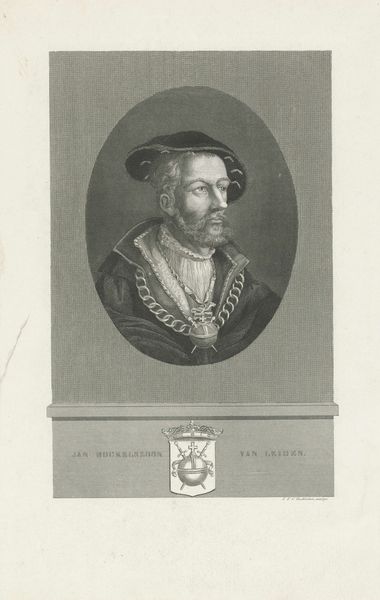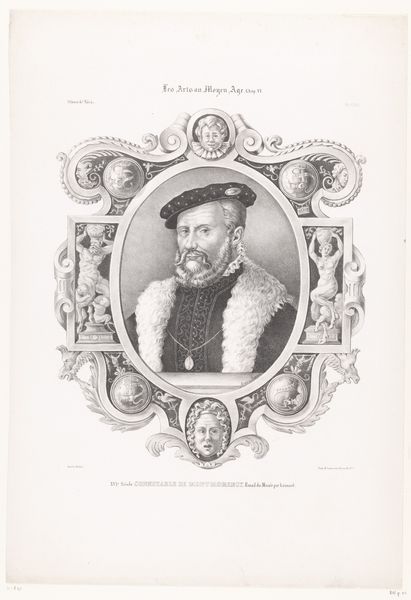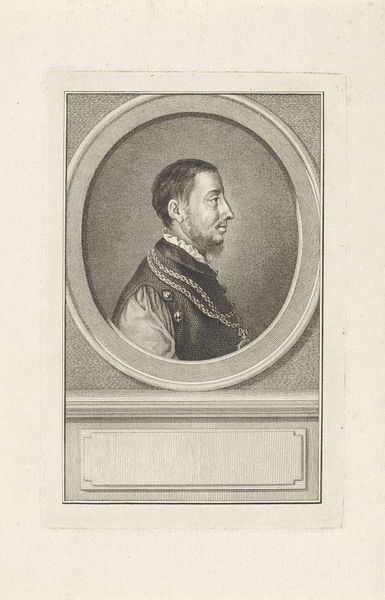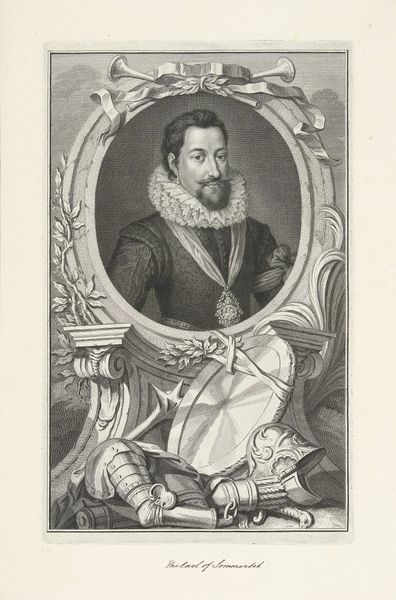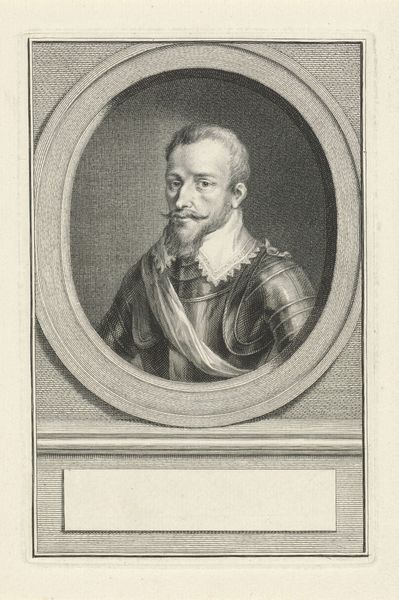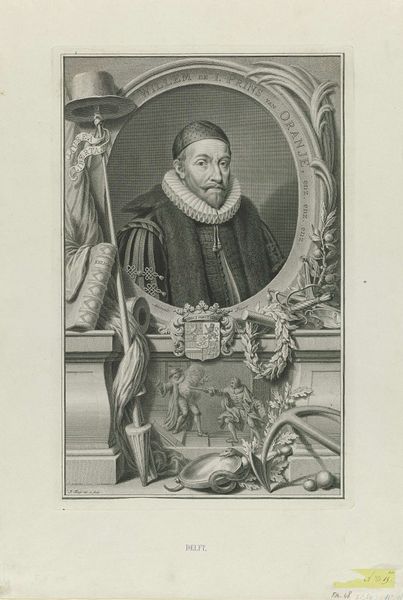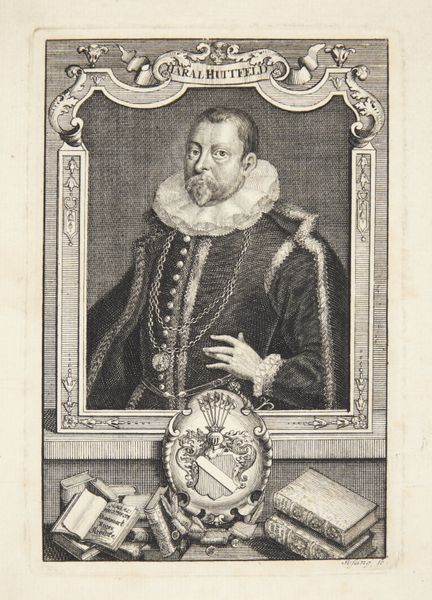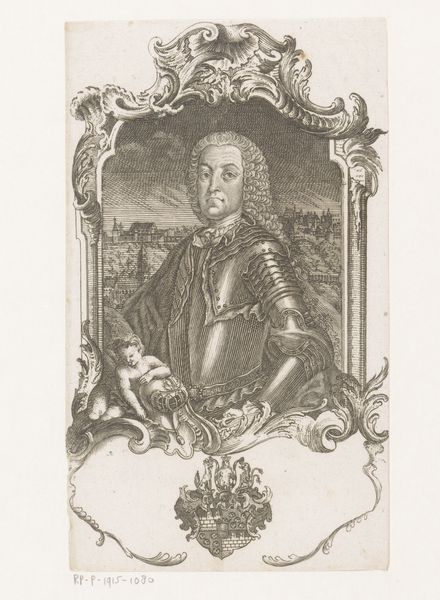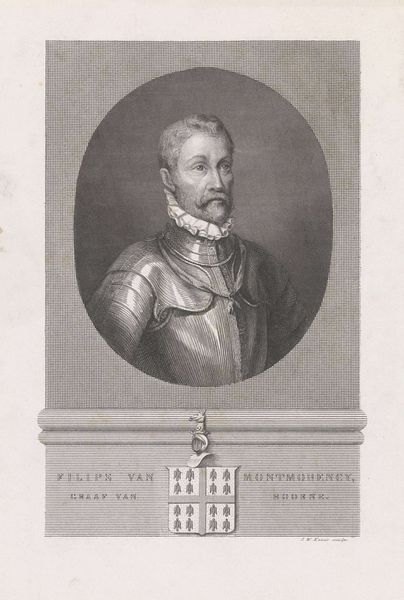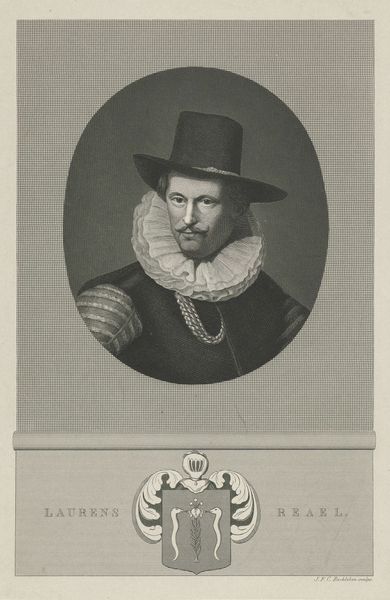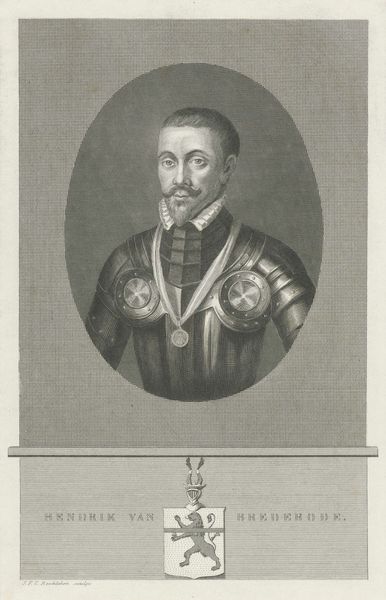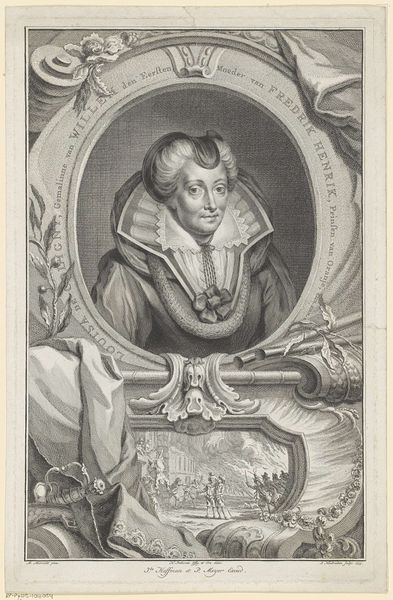
print, engraving
#
portrait
#
neoclacissism
# print
#
history-painting
#
academic-art
#
engraving
Dimensions: height 254 mm, width 171 mm
Copyright: Rijks Museum: Open Domain
This portrait of Charles V was made by Jan Frederik Christiaan Reckleben in the 19th century, using the technique of steel engraving. Steel engraving was a highly skilled, labor-intensive process, where the artist meticulously carves an image into a polished steel plate. The fineness of the lines possible with this method allowed for detailed and subtle tonal variations, which you can see in the rendering of Charles V’s face, clothing, and the heraldic shield below. In contrast to earlier copperplate engraving, steel offered the advantage of producing a far greater number of high-quality prints before the plate wore out. The rise of steel engraving coincided with the growth of commercial printing and publishing. Its capacity for mass production meant that images like this could be widely disseminated, contributing to the construction of historical narratives and national identities. So, while this portrait depicts a 16th-century emperor, it's also deeply embedded in the 19th-century world of industrial production, nationalism, and the commodification of history. The material and the mode of production are key to its meaning.
Comments
No comments
Be the first to comment and join the conversation on the ultimate creative platform.
